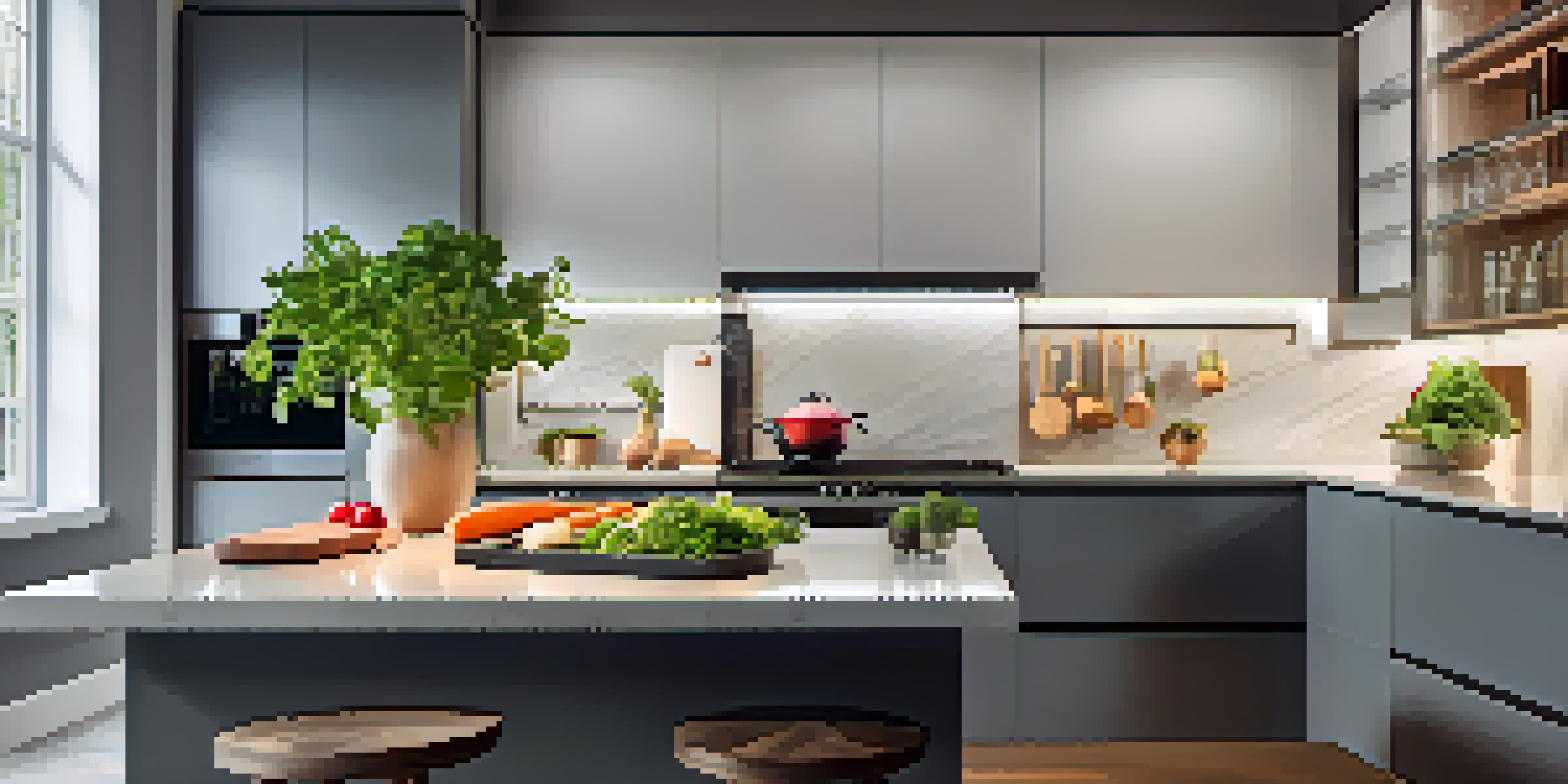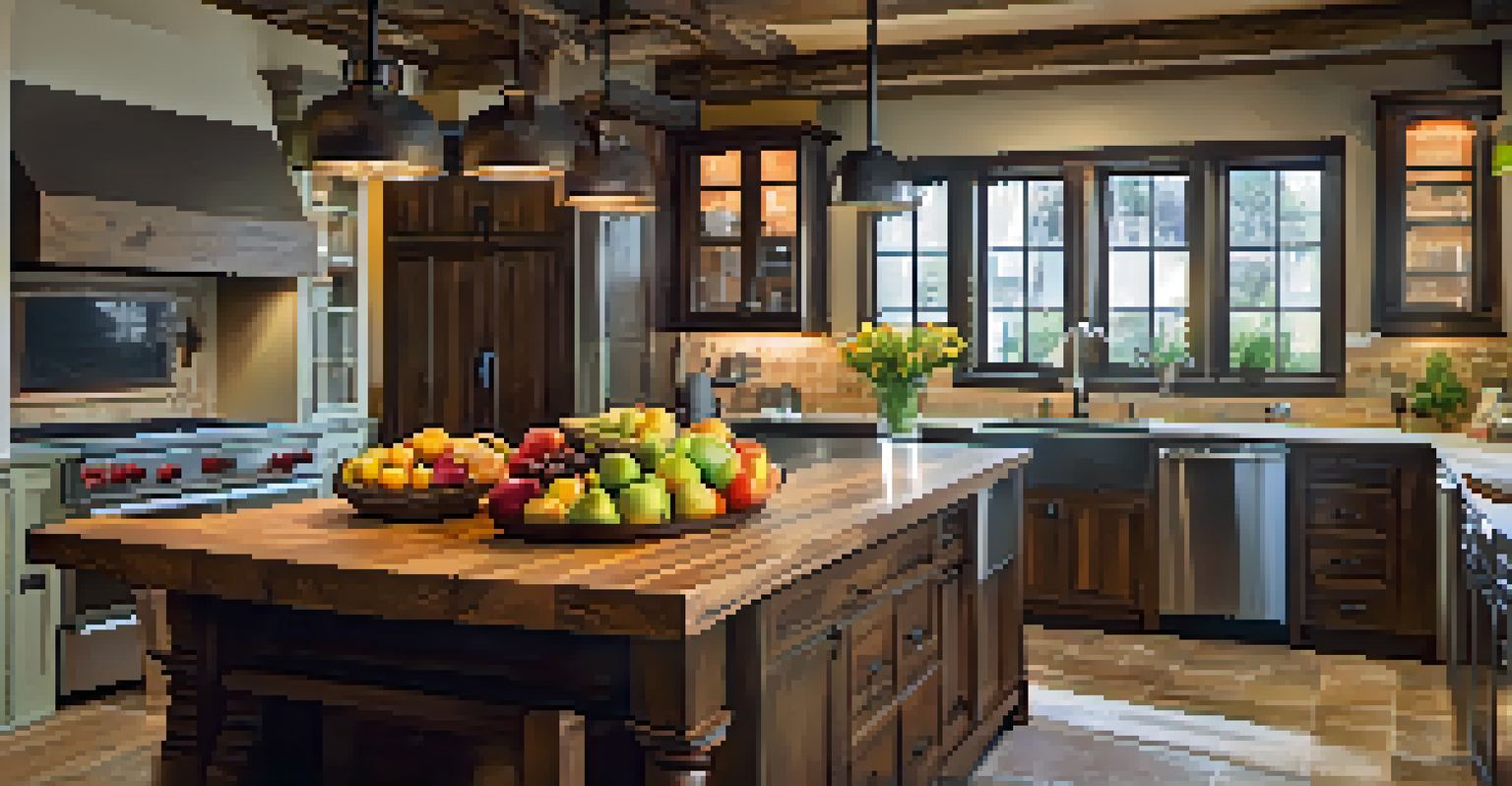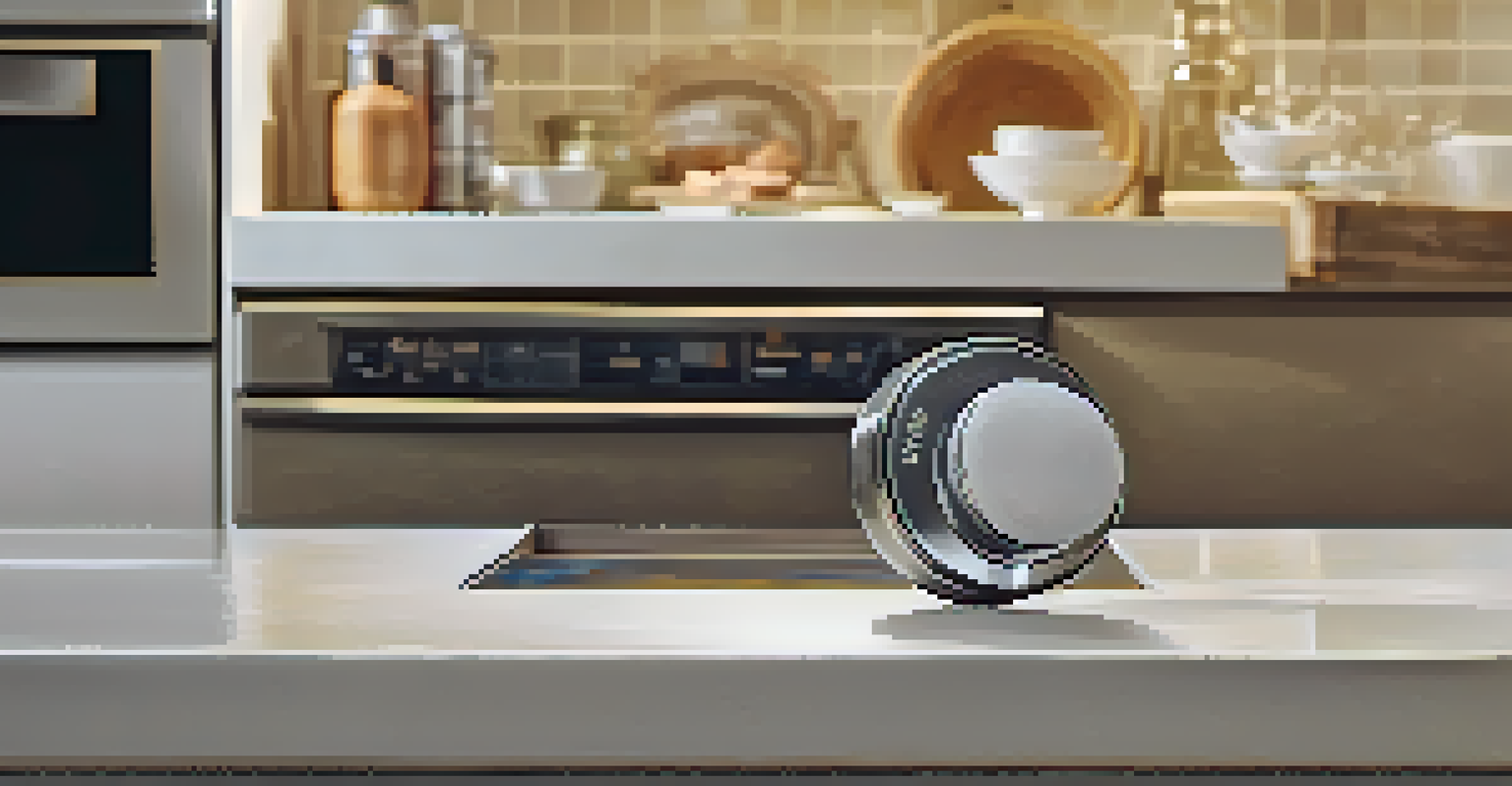Exploring the Use of Task Lighting in Your Kitchen

Understanding Task Lighting and Its Importance
Task lighting refers to focused light sources that illuminate specific areas for activities like cooking, chopping, or reading recipes. Unlike general lighting, which brightens the entire room, task lighting hones in on the areas where you need extra visibility. This makes it essential in a busy kitchen, where precision and clarity can make all the difference in meal preparation.
Lighting is a critical part of the design process. It affects everything from functionality to mood.
Imagine trying to chop vegetables in a dimly lit kitchen—it's not only frustrating but can also be dangerous. Task lighting helps alleviate such challenges by ensuring you have the right amount of light exactly where you need it. It empowers you to work confidently, enhancing both safety and efficiency.
By incorporating effective task lighting, you can transform your kitchen into a more functional and enjoyable space. Whether you're an amateur chef or a culinary expert, understanding how to utilize task lighting can significantly elevate your cooking experience.
Choosing the Right Types of Task Lighting
There are several types of task lighting options available, each suited for different needs and kitchen layouts. Under-cabinet lights are a popular choice, providing direct illumination on countertops without taking up valuable space. Pendant lights hung over islands or workstations can also add a stylish touch while offering focused light.

Another option is portable task lamps, which can be moved around as needed. These are especially useful for those who may need different lighting setups depending on the task at hand. Additionally, considering adjustable fixtures can allow you to direct light exactly where it's required.
Task Lighting Enhances Kitchen Safety
Focused task lighting improves visibility in specific areas, making cooking and food preparation safer and more efficient.
Ultimately, the best type of task lighting for your kitchen will depend on your specific needs and aesthetic preferences. Don't hesitate to mix and match different styles to create a personalized lighting scheme that works for you.
Placement Strategies for Effective Task Lighting
Placement is crucial when it comes to task lighting. For under-cabinet lights, position them toward the front of the cabinets to maximize light on the countertop. This way, the light shines directly on the work surface, eliminating shadows and ensuring a well-lit area for chopping, mixing, or assembling.
Good lighting can make or break a space, especially in the kitchen where precision is key.
For pendant lights, consider the height at which they will hang. Ideally, they should be suspended about 30 to 36 inches above the countertop or island to provide ample light without obstructing your view. This height creates a warm, inviting atmosphere while still being functional.
Don't forget to assess your kitchen's layout and flow. If you have multiple work zones, such as a cooking area and a baking station, ensure that each zone has its own dedicated task lighting to avoid any dark corners that could hinder your culinary creativity.
Incorporating Dimmers for Versatile Lighting
One of the simplest ways to enhance your task lighting is by incorporating dimmer switches. This allows you to adjust the brightness based on your activities—whether you need bright light for detailed tasks or a softer glow for a more relaxed atmosphere during family dinners. Dimmers can help create the perfect ambiance for any occasion.
Using dimmers also contributes to energy efficiency. By lowering the light intensity when full brightness isn't necessary, you can save on electricity costs while still enjoying adequate illumination. It's a win-win situation!
Choose the Right Lighting Style
Selecting appropriate task lighting types, such as under-cabinet and pendant lights, can enhance both functionality and aesthetics in your kitchen.
Moreover, dimmers add an element of control to your kitchen lighting, making it adaptable to your mood and needs. This flexibility can transform a bustling kitchen into a cozy gathering space, enhancing both functionality and comfort.
Choosing Bulbs: Brightness and Color Temperature
The type of bulbs you select for your task lighting can dramatically affect the overall feel of your kitchen. Look for bulbs that offer a brightness level suitable for your tasks, typically measured in lumens. A brighter light is ideal for areas where precision is key, while softer lighting can create a more relaxed setting.
Color temperature is equally important—bulbs are available in various tones, from warm yellow to cool blue-white. For kitchens, a color temperature of around 3000K to 4000K is often recommended, as it mimics natural daylight, making it easier to see the true colors of your ingredients.
By choosing the right bulbs, you can create a kitchen that feels both inviting and functional. The right brightness and color temperature can enhance your culinary experience while making your kitchen a more enjoyable space to work in.
Integrating Task Lighting with Overall Kitchen Design
While task lighting is primarily functional, it can also complement your kitchen's overall design. Consider the style of your kitchen—modern, rustic, or traditional—and choose lighting fixtures that match that aesthetic. This will create a cohesive look that ties the room together beautifully.
For instance, sleek, minimalist fixtures work well in contemporary kitchens, while vintage-style pendants may be perfect for a farmhouse-inspired space. Even the finishes—like chrome, brass, or matte black—can either enhance or detract from your kitchen's charm.
Maintain Lighting for Longevity
Regular maintenance, like cleaning fixtures and replacing bulbs, ensures your task lighting remains effective and visually appealing over time.
By integrating task lighting that aligns with your design vision, you not only enhance functionality but also elevate the visual appeal of your kitchen, making it a place where you feel inspired to cook and gather.
Maintaining Your Task Lighting for Longevity
Just like any other element in your kitchen, task lighting requires regular maintenance to ensure it remains effective and attractive. Start with simple tasks like cleaning the fixtures and bulbs to remove dust and grease buildup. This can significantly improve the light output and overall appearance.
Additionally, keep an eye on any flickering or dimming lights, as these can signal that it's time for a bulb replacement. Regularly checking your lighting will help avoid any unexpected outages during your cooking sessions.

Taking a proactive approach to maintaining your task lighting can prolong its lifespan and keep your kitchen looking great. With a little attention, your task lights can continue to illuminate your culinary adventures for years to come.